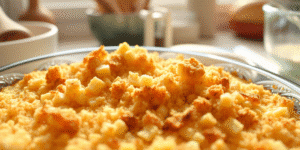Cream cheese sugar cookies are more than just a treat; they’re a canvas for creativity in the kitchen. If you’ve ever bitten into one, you know the soft texture and rich flavor can transport you to a place of nostalgia.
This article dives deep into the world of cream cheese sugar cookies, shedding light on their origins, the science behind their texture, and tips for perfecting your batch.
Cream cheese isn’t just for bagels. It’s a game-changer in cookie baking. When mixed into the dough, it adds moisture and richness that standard sugar cookies lack. This article aims to equip you with the knowledge to elevate your baking skills, whether you’re a novice or a seasoned pro.
The Origins of Sugar Cookies
Sugar cookies have a long history. They trace back to the 1700s in Nazareth, Pennsylvania. The Moravians were among the first to create them, using simple ingredients like sugar, flour, butter, and eggs. Over time, these treats spread across the United States, evolving into various regional styles. The cream cheese version is a more modern twist, adding a delightful creaminess that enhances the flavor profile.
The Science Behind the Dough
Understanding the science is crucial. Sugar cookies rely on a balance of ingredients. Flour provides structure while sugar contributes sweetness and tenderness. Butter adds richness, but cream cheese introduces an entirely new dimension.
The fat content in cream cheese is higher than in butter alone. This results in a softer, chewier cookie. When you bake, the water in the cream cheese evaporates, creating steam that puffs up the cookie slightly. If you want a cookie that melts in your mouth, cream cheese is your secret weapon.
Key Ingredients and Their Roles
Flour
All-purpose flour is the standard choice for sugar cookies. It has the right amount of protein to create a good structure without being too tough. You can experiment with cake flour for a lighter texture, but be cautious—it can make your cookies too fragile.
Sugar
Granulated sugar is essential for sweetness. It also helps achieve a crisp edge while keeping the center soft. Brown sugar can be added for a hint of molasses flavor, which complements the cream cheese nicely.
Butter and Cream Cheese
Using unsalted butter gives you control over the saltiness. The cream cheese should be at room temperature for easy blending. This helps to create a smooth dough. Cold cream cheese can lead to lumps, which you want to avoid.
Eggs
Eggs bind the ingredients together. They also contribute to the cookie’s richness. For a richer flavor, consider using an extra egg yolk.
Flavorings
Vanilla extract is a classic addition, enhancing the overall flavor. Almond extract can also be a delightful twist. Just remember, a little goes a long way.
Common Misconceptions
One common myth is that all sugar cookies are dry. That’s simply not true, especially with cream cheese in the mix. The moisture from the cream cheese keeps them soft. Another misconception is that sugar cookies need to be rolled and cut into shapes. Not at all! You can scoop them out for a more rustic look.
Emerging Trends
Recently, there’s been a rise in gourmet cream cheese sugar cookies. Think artisanal flavors like lavender, matcha, or even chocolate chip variations. These innovative takes are appealing to a broader audience, making cookies more than just a nostalgic treat.
People are also exploring gluten-free options. Almond flour or gluten-free blends can be used, but they may require adjustments in moisture and structure. It’s a fun challenge for bakers!
Tips for Perfecting Your Cookies
Temperature Matters
Make sure all your ingredients are at room temperature. This ensures a smooth dough and even baking. Cold ingredients can lead to uneven textures.
Don’t Overmix
When combining your ingredients, mix just until they’re incorporated. Overmixing can develop gluten, making your cookies tough.
Chill the Dough
Chilling your dough for at least an hour helps prevent spreading during baking. It also enhances the flavors. If you’re short on time, even a 30-minute chill can make a difference.
Watch the Bake Time
Every oven is different. Start checking your cookies a couple of minutes before the suggested bake time. They should be lightly golden around the edges but still soft in the center.
Experiment with Frosting
Cream cheese frosting pairs beautifully with these cookies. You can also try royal icing or a simple glaze. Just remember to let your cookies cool completely before frosting.
Real-World Examples
Consider bakeries that have made a name for themselves with unique cream cheese sugar cookie variations. For instance, a local bakery in Portland offers a lemon cream cheese cookie, blending tartness with sweetness. Customers rave about it, proving that creativity pays off in the baking world.
Another example comes from a trendy café in New York City. They introduced a seasonal pumpkin cream cheese sugar cookie. It’s been a hit, combining fall flavors with the classic sugar cookie base. These examples show how innovation can breathe new life into traditional recipes.
Conclusion
Cream cheese sugar cookies are more than just a sweet indulgence; they’re a testament to the art of baking. By understanding the science and experimenting with flavors, you can create a cookie that not only satisfies a sweet tooth but also impresses any guest. Keep your ingredients balanced, don’t rush the process, and most importantly—have fun in the kitchen.
Whether you’re making them for a special occasion or just to enjoy at home, these cookies are bound to be a hit. So, gather your ingredients, roll up your sleeves, and start baking!

Emily Rose Johnson is a talented writer known for her captivating storytelling and evocative prose, creating unforgettable characters and compelling narratives in various genres.









